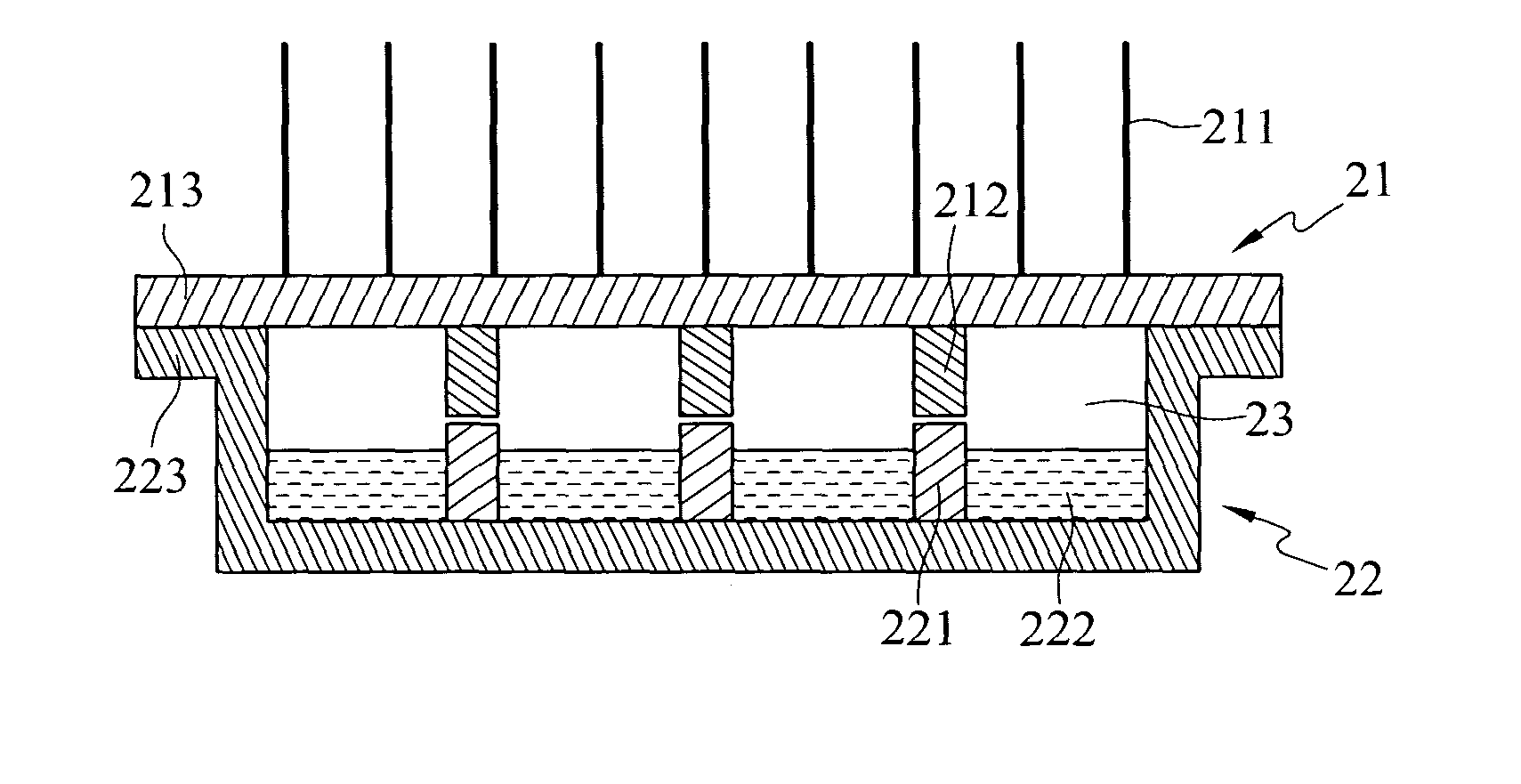Plate evaporator
a technology of evaporator and plate, which is applied in the direction of laminated elements, lighting and heating apparatus, and separation processes, etc., can solve the problems of increased manufacturing cost of high temperature brazing, reduced strength, and difficult control, and achieves cost saving and high yield rate
- Summary
- Abstract
- Description
- Claims
- Application Information
AI Technical Summary
Benefits of technology
Problems solved by technology
Method used
Image
Examples
first embodiment
[0019] As shown in FIG. 2, a plate evaporator as the invention includes a first thermal conductive element 21 as a condenser, and a second thermal conductive element 22 as an evaporator. The first thermal conductive element is a plate element having outer surface tin-soldered with a plurality of heat-dissipation fins 211, and inner surface formed with first reinforced blocks 212. The reinforced blocks 212 are used to prevent the first thermal conductive element 21 from deformation during manufacturing process. The rim of the first thermal conductive element 21 is formed with a first joining portion 213.
[0020] The second thermal conductive element 22 is like a cap. Second reinforced blocks 221 are formed on inner surface of the second thermal conductive element 22 and correspondent to the first reinforced blocks 212 for preventing the second thermal conductive element 22 from deformation during manufacturing process. Capillary structure 222 is also formed on the inner surface. The ri...
second embodiment
[0022] As shown in FIG. 3, a plate evaporator as the invention includes a first thermal conductive element 21 as a condenser, and a second thermal conductive element 22 as an evaporator. The first thermal conductive element is like a cap having outer surface tin-soldered with a plurality of heat-dissipation fins 211, and inner surface formed with first reinforced blocks 212. The reinforced blocks 212 are used to prevent the first thermal conductive element 21 from deformation during manufacturing process. The rim of the first thermal conductive element 21 is formed with a first joining portion 213.
[0023] The second thermal conductive element 22 is like a cap. Second reinforced blocks 221 are formed on inner surface of the second thermal conductive element 22 and correspondent to the first reinforced blocks 212 for preventing the second thermal conductive element 22 from deformation during manufacturing process. Capillary structure 222 is also formed on the inner surface. The rim of ...
PUM
| Property | Measurement | Unit |
|---|---|---|
| thermal conductive | aaaaa | aaaaa |
| yield rate | aaaaa | aaaaa |
| strength | aaaaa | aaaaa |
Abstract
Description
Claims
Application Information
 Login to view more
Login to view more - R&D Engineer
- R&D Manager
- IP Professional
- Industry Leading Data Capabilities
- Powerful AI technology
- Patent DNA Extraction
Browse by: Latest US Patents, China's latest patents, Technical Efficacy Thesaurus, Application Domain, Technology Topic.
© 2024 PatSnap. All rights reserved.Legal|Privacy policy|Modern Slavery Act Transparency Statement|Sitemap


